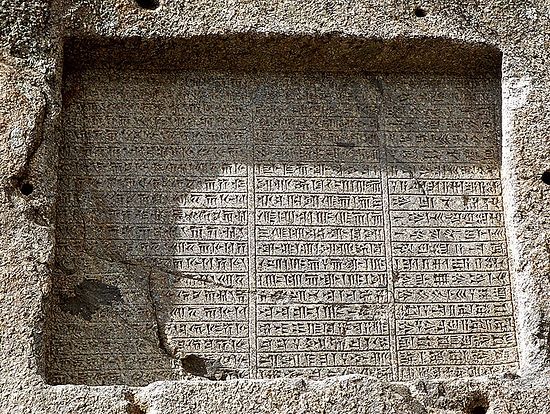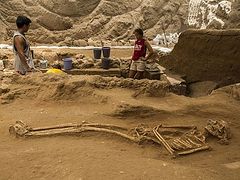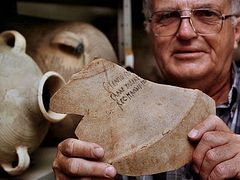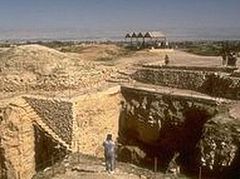Krasnodar territory, Russia, August 8, 2016

A large fragment of a marble slab (stele) with an inscription made on behalf of the Persian King Darius I the Great (550-486 B.C.) has been discovered during ongoing archaeological excavations in the territory of Phanagoria (the largest ancient Greek city of the Taman Peninsula, now in southern Russia). The artifact was unearthed in the course of a field season of the “Phanagoria” archaeological complex expedition of the Institute of Archaeology of the Russian Academy of Sciences (RAS), reports the Oursociety.ru website.
The inscription on the discovered stele segment was made in Old Persian with the use of cuneiform (writing used only by Persian kings). According to scientists’ estimates, around ten–fifteen percent of the message has survived on the stele. Nevertheless, the deciphered parts of the inscription directly indicate that it was made on behalf of the famous King Darius I. The find’s context indirectly confirms this: the stele has been discovered in the strata which can be dated to the first half of the fifth century B.C. It should be noted that the majority of the ancient inscriptions made in cuneiform script (around 200 of such documents are known to date) were discovered in Persepolis, the capital of the old Persian Empire.
One of the words from the inscription can be identified as a place name: “Miletus." It was the largest Greek city in Ionia in what is now Asia Minor. Early in the fifth century B.C. Miletus was at the center of the so-called Ionian Revolt—a military rebellion by several Greek regions of Asia Minor against Darius I. The revolt was suppressed in 494 B.C. The scientists presume that after his victory over the Greeks King Darius installed an inscribed marble stele in the city (for example, with a message announcing his triumph). With time a fragment of the broken stele was brought to Phanagoria. It probably arrived there as a ballast on one of the ships which sailed to the port of Phanagoria, as there is no stone on Taman Peninsula. In ancient times even square stone for building was transported there by sea from the Mediterranean and other regions.
At present, the stele is at the restoration laboratory of the “Phanagoria” scientific and cultural center. Examinations and a more thorough dating of the find are to continue.
On the acropolis the archaeologists have also found a large complex of structures built of mudbrick. Judging by their location (an edge of a hill), the walls thickness (over one meter, or c. 3.28 feet), and the shape of the structures (sub-square and situated in staggered rows), these may have been a city's defensive fortifications. According to the scientists’ preliminary estimates, they were built in the second half of the sixth century B.C. and destroyed early in the fifth century B.C. The archaeologists suppose these are remains of the earliest fortifications of Phanagoria. It should be noted that defensive fortifications of the archaic period and early classical antiquity are a great rarity for archaeologists both in the Black sea region and in the Mediterranean.
Vladimir Kuznetsov, director of the “Phanagoria” State Museum-Preserve of History and Archaeology, head of the complex archaeological expedition of the RAS Institute of Archaeology, Doctor of Historical sciences, notes:
"The finding of the stele with a king’s inscription which was created on behalf of Darius I and, obviously, dedicated to the Ionian Revolt’s suppression, is, without exaggeration, a scientific sensation of international importance. Discovering such an artifact in Phanagoria places this ancient city in the context of one of the most significant events in early history with far-reaching effects for Greeks and Persians alike. This enables us to trace back the links of this colony with other parts of the Greek world, to analyze its role in the expansion of the Greek civilization as far as the Black sea coast. As for discovering the city fortifications: should their purpose be confirmed, this find may become a remarkable event for classical archaeology in the whole of the Mediterranean and Black Sea basins as well."




Stoneface Proof!
The Sudden Unearthing Eruption!
Best Wishes,
Hassan